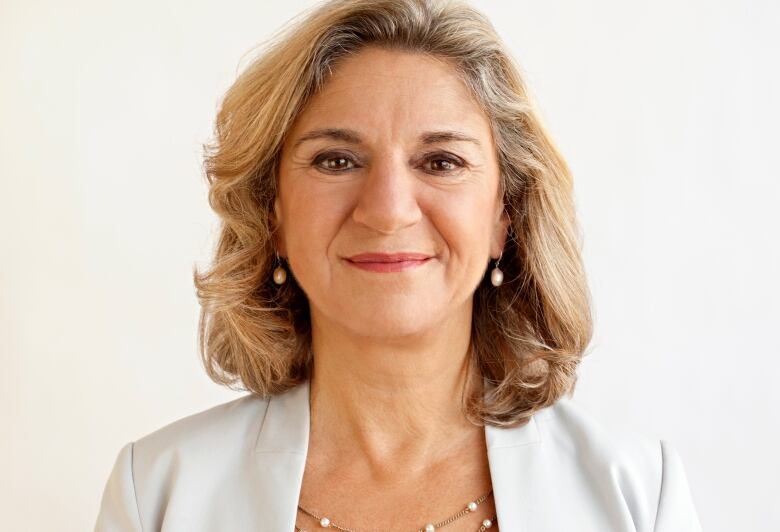CANADA
Is the 'she-cession' over? Statistics point to recovery, experts aren't so sure
55-plus the only group of Canadian women that still haven't
returned to pre-pandemic employment levels
When Alicia Dempster started her maternity leave in June 2019, she never dreamed that she would still be at home two and a half years later.
The Stouffville, Ont., woman fully intended to return to her job as an event planner for an area municipality after 15 months at home caring for her infant son and his toddler brother.
But COVID-19 derailed those plans. When her planned return-to-work date rolled around, the complete absence of public events meant the job she once had no longer existed. The alternative work her employer offered her — cutting grass and picking weeds with the parks department — seemed a poor match for her skills, so she opted to stay home "just a little longer."
Now, her sons are five and two and a half and the Omicron variant is on the rise.
Like many Canadian women, Dempster is not only concerned about how long she's been out of the workforce, but should she find a job, she knows she'll be juggling the demands of work and parenting, including COVID tests and mandatory isolation every time one of her children gets a cough or the sniffles.
While recent data suggests a jobs recovery for working age women, the statistics fail to capture the whole picture, one in which many women are still struggling to balance work and family life.
Job quality over quantity
Early in the pandemic, much was written about the disproportionate toll of COVID-19 on the finances and career prospects of Canadian women.
Female-dominated industries like accommodation and food services were the hardest-hit by restrictions and lockdowns, and many women also suffered from a lack of child care as daycares and schools shut down in those early months.
Even one year on, in March 2021, employment among women remained about 5.3 per cent below where it sat in February 2020, compared to a drop of about 3.7 per cent for men, according to a report from the Labour Market Information Council.
WATCH | How the pandemic has made employers more flexible for working parents:
Over the past year, many women have either left their jobs or reduced their hours so they could take care of children during the pandemic. It has pushed some employers to look into how to make work more flexible for parents. 2:31
But as the economy gradually reopened over the summer and fall, women's prospects improved. Canada as a whole caught up with its pre-pandemic job numbers in September of this year, and according to Statistics Canada, the only age group of women that has yet to recover to its pre-pandemic employment level is the 55-plus category.
"Now if you look at younger women, their employment rate is higher than it was before the pandemic. A little more than one percentage point higher," said University of Calgary economist Trevor Tombe.
"It's the same story for the 25-54 age group — their employment rate is one percentage point higher."
But Armine Yalnizyan, a Toronto-based economist and the Atkinson Foundation's Fellow on the Future of Workers, cautions against declaring the "she-cession" over. She pointed out that statistics offer an aggregate look at a population, and many individual women are still struggling with the impacts of the pandemic on their careers and finances.
In addition, Yalnizyan said, it's crucial to remember that Statistics Canada employment data only looks at the "quantity" of jobs, not "quality" — a key part of the story when it comes to COVID-19 and its affect on gender and the workforce.
"The quality of work question is really, really important to the question of what's been happening to women," she said.
"For the 'I'm not able to get a promotion, I've had to change jobs or I have stress about possibly losing my job, I'm barely hanging on because my kids are home half the time,' the binary of 'are you employed or aren't you employed' isn't a very good metric."
Impact on working mothers
Before the pandemic hit, Stephanie Bakker-Houpf of High River, Alta., was excited to finally have time to focus on getting her creative consultancy and content management business off the ground after years of putting her own career dreams on the back-burner to raise her two now-teenage daughters.
But not only did her bread-and-butter contracts with musician and entertainer clients dry up in the absence of live performances last year, the divorced Bakker-Houpf found herself sacrificing precious work time as she helped her daughters with home-schooling and supported them through all of the disruptions and anxieties that go along with being a kid in a pandemic.
"Kids today are constantly dealing with uncertainty and their lives being interrupted. And yet, we as moms are still supposed to be able to function the same way and show up at our jobs the same way," Bakker-Houpf said.
Jennifer Hargreaves, founder and CEO of diversity recruitment organization Tellent — which aims to help women in career transition find new opportunities — said while it's true that as many women may be working now as before the pandemic, the numbers don't tell the whole story.
In fact, Hargreaves said she worries Canadian working women may be heading into another crisis in 2022, as employers begin to urge employees to come back to the office on at least a part-time basis even as schools and daycares continue to struggle with COVID cases and children under five remain unvaccinated.
"What's frightening is some employers seem eager to say, 'we're going back to normal this year,' " Hargreaves said.
"Because what I actually see on the ground is more and more women reaching out and getting mental health support, because they've just got to a tipping point with burnout. And women are taking stress leave."
WATCH | Child care among key policies needed for she-covery, economist says:
The federal government is planning a national child-care program as one way to help get women — who bore the brunt of pandemic job losses — back to work. It’s a key support that one economist says is key to a ‘she-covery.’ 2:02
If women have one thing working in their favour, Hargreaves said, it's the fact that employers across a wide range of industries are struggling with systemic labour shortages right now.
She said she hopes that will spur employers to recognize that the way to retain talent is to continue to prioritize flexibility.
"I hope employers can take the lessons learned during COVID-19 and start implementing them and doing that culture shift," Hargreaves said.
"I think they're absolutely going to need to do that in order to stay agile in this new economy."



















